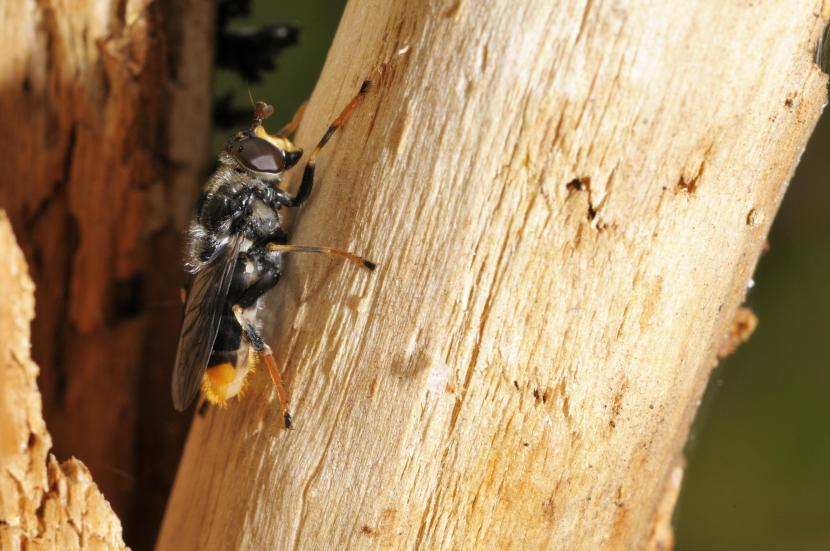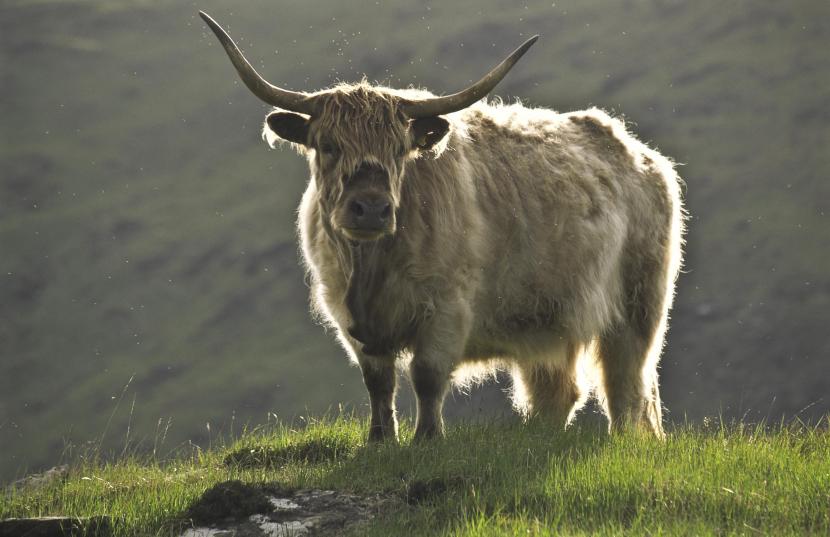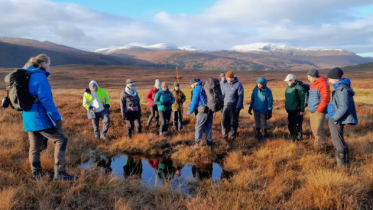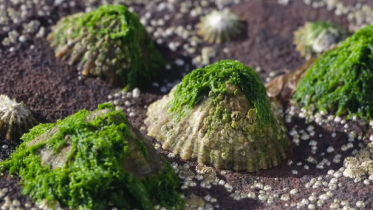
Flies
Beetles are the dominant insect group globally, but flies – including gnats, midges and mosquitoes – are more abundant in temperate regions.
In the British Isles, there are about 7,000 species of the order Diptera, meaning ‘two wings’.
Scotland is home of two hoverflies of special interest because of their rarity and which have special conservation efforts put together to protect them.
Learn about these hoverflies on the NBN Atlas Scotland website:
One of the UK's rarest species. Find out how keepers at the Highland Wildlife Park are working to save this important pollinator and what the future holds for the pine hoverfly, in this video by the Royal Zoological Society for Scotland.
Other important fly species in Scotland are:
Fly larvae are found mostly in moist places: soil, water, plants, carrion, dung and deadwood.

©Lorne Gill.
Ecosystem roles
Many flies are nectar feeders and play an important role as pollinators. For example, hoverflies are familiar garden visitors.
Other fly species feed on decaying matter, so help to recycle dung and carrion.
Problem species
Some fly species cause serious health problems. For example, mosquitoes can transmit deadly diseases such as yellow fever, malaria and sleeping sickness.
In Scotland, midges can be a major nuisance because of their numbers in summer but are important to the food chain.

Backlit highland cow in the evening light. Glen Harris, Isle of Rum NNR.© John MacPherson / NatureScot.
Find out about midges and their distribution on the NBN Atlas Scotland website.
Protection of invertebrates
Find out about our protected species of invertebrate.
Learn about protected invertebrate species and licensing.





